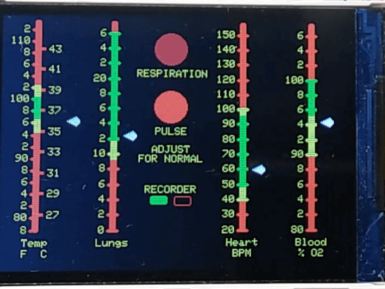
Overview
The Arduino MKR SD Proto Shield allows you to easily connect an SD card to your MKR form factor board. Use it to enhance the IoT features of your MKR1000, as well as store data coming from the web or sensors read by your board!
There's also a small prototyping area for soldering components.
Tech specs
| Digital I/O Pins | 21 |
| PWM Digital I/O Pins | depending on the board |
| Analog Input Pins | 7 |
| Analog Output Pins | depending on the board |
| DC Current per I/O Pin | depending on the board |
| DC Current for 3.3V Pin | depending on the board |
| DC Current for 5V Pin | depending on the board |
| Lenght | 61.5 mm |
| Width | 25 mm |
| Weight | 13 gr. |
Conformities
Resources for Safety and Products
Manufacturer Information
The production information includes the address and related details of the product manufacturer.
Arduino S.r.l.
Via Andrea Appiani, 25
Monza, MB, IT, 20900
https://www.arduino.cc/
Responsible Person in the EU
An EU-based economic operator who ensures the product's compliance with the required regulations.
Arduino S.r.l.
Via Andrea Appiani, 25
Monza, MB, IT, 20900
Phone: +39 0113157477
Email: support@arduino.cc
Documentation
OSH: Schematics
The Arduino MKR SD Proto Shield is open-source hardware! You can build your own board using the following files:
EAGLE FILES IN .ZIP SCHEMATICS IN .PDFLearn more
Get Inspired

Control the speed of a 12 volt computer fan using a PWM duty cycle

The future envisioned in the original Star Trek included, among other things, a shipboard sickbay with electronic monitors strangely reminiscent of the machines that medical personnel use today. To recreate a functional mini-replica of these displays, YouTuber Xtronical turned to a 2.8” TFT screen, a breadboard, and an Arduino Nano—noting that an Uno would also work. The LCD display nails the look of Dr. McCoy's device, and heartbeat sound can be played along with an onscreen flashing “PULSE” circle. A MAX30100 pulse/oximeter sensor and a temperature sensor take body readings, while a second DS18B20 is implemented to read ambient conditions for increased accuracy. It’s a fun Trekkie project, and Xtronical plans to elaborate on how it was made in future videos. A build of a working original Star Trek display with real sampled heart beat sound. Uses various sensors to get the readings from your body (via just your fingers) and displays them in the style of the 60's sick bay screen. This bare "Bones" system could be built into a model unit or even a replica Tricorder.








